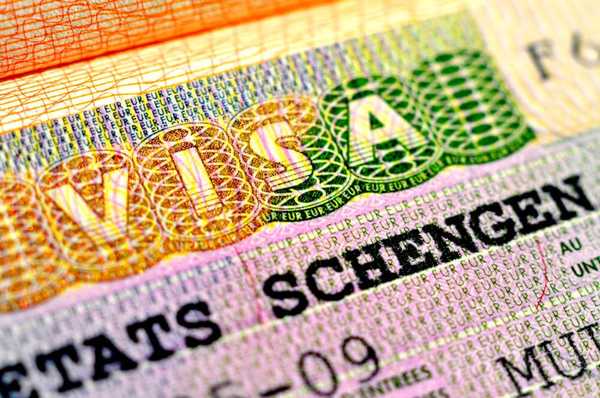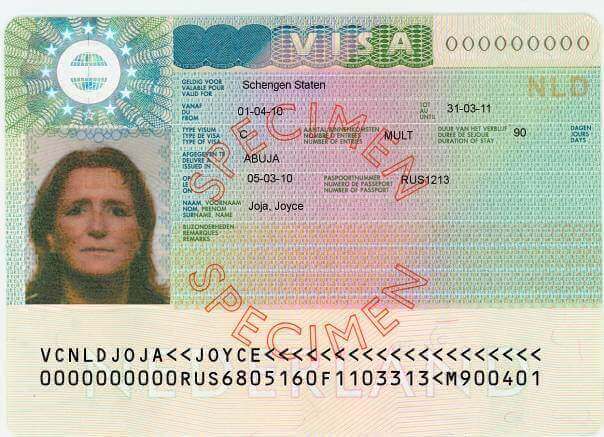Travel
Complete Guide On Schengen Visa – How To Apply, Types, And FAQs

The Schengen Visa is a European short stay visa that allows its holder to travel throughout the Schengen Area. This visa, given by a Schengen state, allows you to visit any Schengen country for up to 90 days in 180 days.
Schengen has 27 countries. These countries share a common visa policy and no internal borders, however procedures and documentation may vary.
Every citizen of a non-Schengen country without a Visa Facilitation Agreement with the EU needs a Schengen visa to enter any member country. From 2024, visa-free travelers will need ETIAS.
Many travelers dream about visiting Europe. Europe’s rich history, various cultures, breathtaking landscapes, and iconic landmarks offer many adventures. Art, history, cuisine, outdoor experiences, and the dynamic ambiance of European towns provide something for everyone.
Not everyone can just pack and go to Europe. Some travelers need Schengen visas.
What Countries Can I Visit With a Schengen Visa?
With a Schengen visa you can visit all Schengen member countries:
- Austria
- Belgium
- Croatia
- Czechia
- Denmark
- Estonia
- Finland
- France
- Germany
- Greece
- Hungary
- Iceland
- Italy
- Latvia
- Liechtenstein
- Lithuania
- Luxembourg
- Malta
- Netherlands
- Norway
- Poland
- Portugal
- Slovakia
- Slovenia
- Spain
- Sweden
- Switzerland
However, there is also a list of non-Schengen countries that allow you to enter with a valid Schengen visa, such as:
- Albania
- Antigua and Barbuda
- Belarus
- Bosnia and Herzegovina
- Bulgaria
- Colombia
- Cyprus
- Georgia
- Gibraltar
- Kosovo
- North Macedonia
- Montenegro
- Romania
- Sao Tome and Principe
- Serbia
- Turkey
What Are The Types of Schengen Visas?
You can get a Schengen Visa if you are travelling to Europe for the following purpose:
- To transit through the airport of a country in the Schengen zone in order to take the plane to your Schengen destination country.
- Tourism visits and sightseeing.
- Business visits
- Visiting family members and friends
- Travel as part of cultural exchange program, sports or research
- Medical visits
- Short term study courses.
- Official visits
*The Airport transit visa is a Category A visa, but all visas that are issued for different purposes fall into the C category.
Depending on the number of entries and the number of countries you can visit, you could be issued a Uniform Schengen visa or a Limited Territorial Validity visa.
What Does a Schengen Visa Look Like?
If the authorities decide to grant you a Schengen visa, they will attach it in the form of a sticker to the blank pages of your passport. This is what a Schengen visa looks like:

Click here to learn how to read the Schengen visa sticker.
How to Apply for a Schengen Visa?
To have a successful Schengen visa application, you must go through these simple steps:
- Fill the Schengen Visa Application form.
- Make an appointment.
- Complete the documents file.
- Show up at the appointment.
- Provide biometrics.
- Verify the documents.
- Pay the visa fees.
Fill the Schengen Visa Application form
Fill out the online application form carefully and correctly, print it twice, and sign it at the end. The form includes questions about your name, date of birth, country of birth, passport number, and nationality. You will also be asked questions about your trip, such as how long you expect to spend in each country, where you want to stay, and so on.
Make an appointment
Appoint an interview through the website of the consulate or embassy of the country you are planning to visit, in your country of residence.
Complete the documents file
Make two copies of all Schengen visa documents. Organize them before the appointment to avoid a mess. Visa applicants must leave their passports at Schengen country consulates. Schengen visa applications are canceled if you withdraw your passport during processing.
Show up at the appointment
Show up at the appointment center on time. Remember that if you are late even for a few minutes, then they will probably cancel your appointment. The submission process takes around 10 minutes to complete.
Provide biometrics
You will also have to get your fingerprints scanned at the consulate’s office if you have never before applied for a visa to Europe. If you have, then you don’t have to do it again since the consulate should be able to look it up.
Verify the details
After your application has been verified, your information will be uploaded into the online system and you will receive a printed copy of your application, which typically takes 10 to 15 minutes. When you receive the printed form, please double-check all of the information and sign it.
Applicants under the age of 18 must be accompanied by their mother/father/legal guardian.
Pay the fees
A Schengen visa application for an adult costs €80. The visa charge for minors between the ages of 6 and 12 is 45€.
After you pay the fees, you will be given a receipt that you must preserve in order to pick up your completed application. The cost will not be refunded if your visa application is denied. If you apply for a visa again, you must pay the fees again.
Where Should You Submit Your Application for a Schengen Visa?
You should apply for a Schengen Visa at the embassy or consulate of the Schengen country you are planning to visit.
If you’re visiting many countries and spending equal amounts of time in each, you must apply at the embassy of the nation where you’ll spend more time. If you want to spend five days in France and five days in Germany, you must apply at the embassy of the nation where you’ll land first.
When Should I Apply for a Schengen Visa?
The applications for a Schengen visa must be submitted at least 15 days before the intended travel and not earlier than 6 months before the start of your intended travel.
Keep in mind that you need to make an appointment before submitting your visa application. Depending on where you are applying from, appointments may need to be made weeks in advance.
Who Is Entitled to Accelerated Schengen Visa Procedure Free of Charge?
Applicants belonging to one of the categories below are entitled to an accelerated visa procedure free of charge:
- You are a family member of a European Union (EU) or European Economic Area (EEA) citizen, and the EU/EEA citizen is either traveling to or residing in a different member state than their own.
- You are accompanying the EU/EEA citizen or intending to join them in the Schengen State they are traveling to.
What Additional Documents Do I Need to Present at the Schengen Port of Entry?
When entering the Schengen Area, in addition to your passport with the visa sticker on it, you will need to present additional documents at the port of entry. The additional documents include the following:
- Proof of travel insurance,
- Evidence of financial means, and
- Proof of accommodation in Europe.
*Some countries might request you to present all three mentioned documents, while others may only require one or two. The requirement differs from one Schengen country to another.
How Long Can I Stay In Europe With a Schengen Visa?
You can stay in Schengen for 90 days in 6 months with a visa. The maximum stay is 90 days in 180 days. Under “Duration of visit,” your visa sticker states its validity.
Authorities may grant you a visa for the time you requested or for a longer or shorter duration, based on their discretion. The embassy sets the number of days you can stay in Schengen and the earliest and latest dates you can enter and leave, which can be perplexing.
What If You Need to Stay for More Than 90 Days?
If you want to stay longer than 90 days in the Schengen Area, you’ll require a long-stay visa or residence permit from that nation. European National Visas are issued to Schengen visitors staying longer than 90 days for employment or education.
D visas for Europe are available to those in the following categories:
- An international student in a program that grants Schengen visas.
- International student about to start full-time studies in Europe.
- Teacher at a higher education institution or research center in Europe.
- Professional traveling to Europe with the purpose of sharing expertise.
- Traveler in the Schengen Area who is experiencing an emergency, as a medical condition that prevents departure at the end of your National Visa.
Uniform Schengen Visas (USV)
The Uniform Schengen Visa (USV) allows its holder to travel and stay in the Schengen Area for up to 90 days every six-month period. There are three types of Uniform Schengen visas:
Single-entry visa. A single entry visa allows you to enter a Schengen country only once and stay until the visa’s validity expires. If you depart before the visa expires, you will be denied re-entry because the visa is considered to have expired once you leave the country.
Double-entry visa. A Double entry visa allows you to enter a Schengen country twice within the validity period of the visa. If you visit the nation twice and leave the second time before the visa expires, you are not allowed to return since the visa is considered to have expired once you leave the country for the second time.
Multiple-entry visa. The Multiple entry visa allows you to enter and leave the Schengen Zone as many times as you please as long as your visa is valid.
Can I Convert My Schengen Multiple Entry Visa Into a National Visa?
No, a C multiple entry visa cannot be converted into a type D national visa. Schengen visas are designed primarily for short-term stays and transit within the Schengen Zone. Long-stay (type D) visas, on the other hand, grant the permission to live and work in a specified nation.
You also cannot apply for a residence permit in a Schengen country where you have a Schengen visa.
If you want to apply for a D visa, you must do it from your home country.
Can I Get My Schengen Visa Extended?
A Schengen visa can be extended only under exceptional circumstances. Therefore, in order to get your visa extended, you must have a very strong reason behind it, such as:
- Force majeure.
- Humanitarian reasons.
- Serious personal reasons.
Show strong proof that you cannot leave the country before your visa expires. Visa extensions are only granted if you have spent less than 90 days in the Schengen Area in 180 days. If you’ve spent more than 90 days in Schengen in six months, your visa won’t be extended. Before your visa expires, seek for an extension.
What Happens if I Overstay in Europe?
If you exceed the allowed duration of your stay in Europe, there can be serious consequences. However, penalties and outcomes vary depending on the country and the length of the overstay.
Potential repercussions for overstaying in Europe include:
- Fines.
- Entry bans.
- Legal action leading to deportation or removal.
- Negative effects on future visa applications or immigration records.
Why Would a Schengen Visa Application Be Denied?
A Schengen visa application may be refused for different reasons. However, here are some of the most common reasons why Schengen visa applications are rejected:
- You present false, counterfeit, or forged travel documents.
- The required documents do not meet the criteria set by the embassy.
- You do not provide a reason for the purpose and conditions of the intended stay.
- Insufficient means of subsistence.
- There is an alert in the SIS for refusal of entry.
- You are considered a threat to public policy, internal security, or public health.
- Invalid Travel Insurance.
What Can I Do In Case of Schengen Visa Rejection?
If the embassy or consulate of your destination country denies your Schengen visa, you can appeal. On the day you receive your visa decision, you will receive a paper explaining the denial. The article will also explain appeals.
The Schengen Member State that made the final visa decision must be appealed against in line with its law.
Can I Reapply if My Schengen Visa Application Has Been Rejected Once?
Reapplying for a Schengen visa after a rejection is possible. In such cases, use the first refusal as a guide to avoid making the same mistakes on the subsequent visa application.
Embassies usually advise applicants to carefully analyze the initial decision and make any required changes. Reapplying requires paying the visa fees again, which cover Schengen visa processing.
Limited territorial validity visas (LTV)
The LTV visa is valid only in the Schengen countries that issued it. If France issued your visa, you can only stay in France. LTV visa holders cannot transit between countries. This non-Uniform Visa is given for humanitarian or international commitments.






















